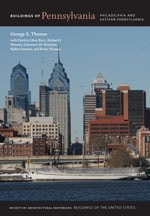
Just to the east of Broad Street at Locust Street is a cluster of elite institutions and houses that form a bridge between the old city and Rittenhouse Square to the west. Such is the appropriately traditional context for the Historical Society, which avails itself of the eighteenth-century Philadelphia palette of materials—red brick and Pennsylvania blue marble—an appropriate choice for a building that was a treasury of Philadelphia culture; the result, however, was still clearly Victorian in its proportions and volumes. Hutton was first engaged by the Historical Society in 1883 to make additions to its predecessor, the white marble-fronted mansion of John Hare Powel (1832, William Strickland). When that building was demolished, its fireplaces were incorporated into the present design. The interior was much altered to create an exhibition space for the bicentennial and in turn was rethought by VSBA to restore the reading room to its prime space on the ground floor.














